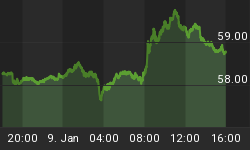A chimerical force has been rampaging through global markets in recent months, wreaking widespread havoc. Cobbled together from myriad agreements, assumptions, and transactions by academics, financiers, and marketers, this labyrinthine creation was once seen as an unmitigated success of new age financial alchemy.
But now, with changing economic and financial conditions exposing the derivatives-securitization monster to the harsh light of day, the nightmare of Frankenstein finance is coming home to roost.
For years, industry insiders and so-called experts have proclaimed the virtues of slicing, dicing, and repackaging risk. They waxed on about how borrowers and savers, and society as a whole, could only benefit from such machinations. They suggested any sort of exposure could be disbursed and dissipated to the point where it essentially disappeared. Some even claimed that the crises of the past would no longer exist.
Yet amid the hype and assurances, few supporters spoke of the dark side of wanton and widespread risk-shifting. They didn't seem -- or want -- to acknowledge that by combining complicated risks in unfamiliar and unnatural ways, the end result could be an uncontrollable monstrosity -- one that eventually turned on its masters.
Nor did they heed the notion that by scattering risk into every nook and cranny of the global financial system, the vast web of overlapping linkages virtually guaranteed that serious problems in one sector, market, or country would trigger far-reaching shockwaves. Much like, for instance, the allegedly "contained" meltdown in the subprime sector has done.
Proponents also discounted the fact that peaks and troughs would be amplified to stomach-churning extremes by technology and networks that ensure the smooth functioning of such complex systems. In the new age, point-and-click computing power and fiber-optic networks are a substitute for physical proximity when it comes to promulgating an old-fashioned rush for the exits.
Another problem with this synthesized latticework is that it enables toxic fallout to flow unimpeded and puddle in places with widely varying rules, regulatory standards, political regimes, and moral codes. This all but ensures that when defensive measures have to be taken, solutions are not only hard to find, but impossible to implement.
What's more, with loans and other easy-to-understand financial products squeezed through the sausage-grinder of structured finance into cash-flows, tranches, and other nebulous constructs, few regulators, politicians, or industry leaders will be able to ring-fence, let alone identify, the source of any systemic toxicity.
The transformation of illiquid obligations into tradable securities and the emergence of markets for all sorts of exotic derivatives have created a dangerous illusion of rampant liquidity. In truth, with energy and resources drawn away from public exchanges and plain-vanilla products into a splintering array of pseudo-markets, the stage is set for these phantom trading venues to disappear -- suddenly, and all at once.
Unintended consequences have also stemmed from the popular belief that the "system" is a lot safer than it used to be. Many new age operators have been motivated, even compelled, to take on far more risk than they might have when unlimited cheap finance, safety nets, and instant-exit strategies were lacking.
And even with the added exposure, Wall Streeters have been much less worried about circumstances going awry than in the past -- until recently, at least. That is because they believed they had passed the risk along. No point in paying too much attention to what they were dumping into the global financial system - it was somebody else's problem now.
Of course, the innovations and efficiencies of modern finance enabled all comers, regardless of acumen or resources, to grab their share of the pie, no matter how overpriced, dangerous, or misrepresented the stuff that Wall Street was churning out happened to be. There's nothing like having plenty of weak hands in the game when the going gets tough.
Not surprisingly, though, now that the losses are starting to pile up and everyone seems to be up to their ears in all sorts of toxic financial waste, it seems that a growing number of these naïve bagholders are mad as hell and gearing up for a fight - as well as putting their lawyers on retainer.
Even the notion of splitting risks into simple parts proved fallacious. While those who traded mortgage-backed securities, for example, thought they were mainly dabbling in credit risk, the reality now seems altogether different. Aside from liquidity, correlation, counterparty, and other risks, many have, like Bear Stearns, been confronted with another form of exposure -- reputational risk. They have been forced to backstop legally separate operations or face having their own viability threatened.
Over-reliance on technology and overconfidence in the prowess of academics helped foster a near blind dependence on dubious data and inadequate models. These were, in turn, transformed into the seemingly unshakeable foundations of multi-billion dollar investment decisions. Greed, complacency, and fraud followed, and as the flow of money circled around, many of the original assumptions are turning out to be dicier still.
In the real estate, for example, what many once believed was the gold standard of collateral has lost its luster. For strapped commuters living in an age of digital money, it seems that automobile loan and credit card payments now have greater priority than the monthly mortgage bill. With the lax standards of recent years leaving many borrowers with little skin in game, is it really all that surprising?
Regardless, now that the man-made monstrosity has emerged from dormancy with a destructive, self-perpetuating momentum, it's too late, of course, to go back and try to repair the mistakes of the past. All we can do now is batten down the hatches and steel ourselves for a powerful and rapidly expanding global threat: the revenge of Frankenstein finance.















